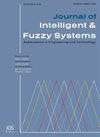基于蜜蜂采集花粉算法(BCPA)的深度卷积神经网络滑坡数据平衡与空间预测
IF 1
4区 计算机科学
Q3 COMPUTER SCIENCE, ARTIFICIAL INTELLIGENCE
引用次数: 0
摘要
预测滑坡易发地区对各种应用至关重要,包括应急响应、土地规划和减灾。在目前的研究中,需要有一个彻底的滑坡清单和适当的抽样不确定性问题。随着机器学习技术的发展,滑坡风险测绘已经大大扩展。然而,滑坡预测的主要问题之一是数据不平衡。这是有问题的,因为根据以前的数据生成准确的滑坡库存地图是具有挑战性的或昂贵的。本研究提出了一种新的滑坡预测方法,使用生成对抗网络(GAN)生成合成数据,使用合成少数过采样技术(SMOTE)克服数据不平衡问题,使用蜜蜂采集花粉算法(BCPA)进行特征提取。结合184个滑坡和10项指标,包括地形湿度指数(TWI)、坡向、距道路距离、总曲率、输沙指数(STI)、高度、坡度、河流、岩性和坡度长度,建立了一个地理数据库。数据是使用深度卷积神经网络(DCNN)技术来填充数据集的GAN生成的。提出的DCNN-BCPA方法的发现与当前的机器学习方法合并,如随机森林(RF),人工神经网络(ANN), k-近邻(k-NN),决策树(DT),支持向量机(SVM),逻辑回归(LR)。采用92.675%、96.298%、90.536%、96.637%和45.623%的指标对模型的准确率、精密度、召回率、f得分和RMSE进行了测量。这项研究表明,协调滑坡数据可能对机器学习模型的预测能力产生重大影响。本文章由计算机程序翻译,如有差异,请以英文原文为准。
Deep convolutional neural networks with Bee Collecting Pollen Algorithm (BCPA)-based landslide data balancing and spatial prediction
Predicting the landslide-prone area is critical for various applications, including emergency response, land planning, and disaster mitigation. There needs to be a thorough landslide inventory in current studies and appropriate sampling uncertainty issues. Landslide risk mapping has expanded significantly as machine learning techniques have developed. However, one of the primary issues in Landslide Prediction is data imbalance (DI). This is problematic since it is challenging or expensive to generate an accurate inventory map of landslides based on previous data. This study proposes a novel landslide prediction method using Generative Adversarial Networks (GAN) for generating the synthetic data, Synthetic Minority Oversampling Technique (SMOTE) for overcoming the data imbalance problem, and Bee Collecting Pollen Algorithm (BCPA) for feature extraction. Combining 184 landslides and ten criteria, including topographic wetness index (TWI), aspect, distance from the road, total curvature, sediment transport index (STI), height, slope, stream, lithology, and slope length, a geographical database was produced. The data was generated using GAN, a Deep Convolutional Neural Network (DCNN) technique to populate the dataset. The proposed DCNN-BCPA approach findings were merged with current machine learning methods such as Random Forests (RF), Artificial Neural Networks (ANN), k-Nearest Neighbours (k-NN), Decision Trees (DT), Support Vector Machine (SVM), logistic regression (LR). The model’s accuracy, precision, recall, f-score, and RMSE were measured using the following metrics: 92.675%, 96.298%, 90.536%, 96.637%, and 45.623%. This study suggests that harmonizing landslide data may have a substantial impact on the predictive capabilities of machine learning models.
求助全文
通过发布文献求助,成功后即可免费获取论文全文。
去求助
来源期刊

Journal of Intelligent & Fuzzy Systems
工程技术-计算机:人工智能
CiteScore
3.40
自引率
10.00%
发文量
965
审稿时长
5.1 months
期刊介绍:
The purpose of the Journal of Intelligent & Fuzzy Systems: Applications in Engineering and Technology is to foster advancements of knowledge and help disseminate results concerning recent applications and case studies in the areas of fuzzy logic, intelligent systems, and web-based applications among working professionals and professionals in education and research, covering a broad cross-section of technical disciplines.
 求助内容:
求助内容: 应助结果提醒方式:
应助结果提醒方式:


